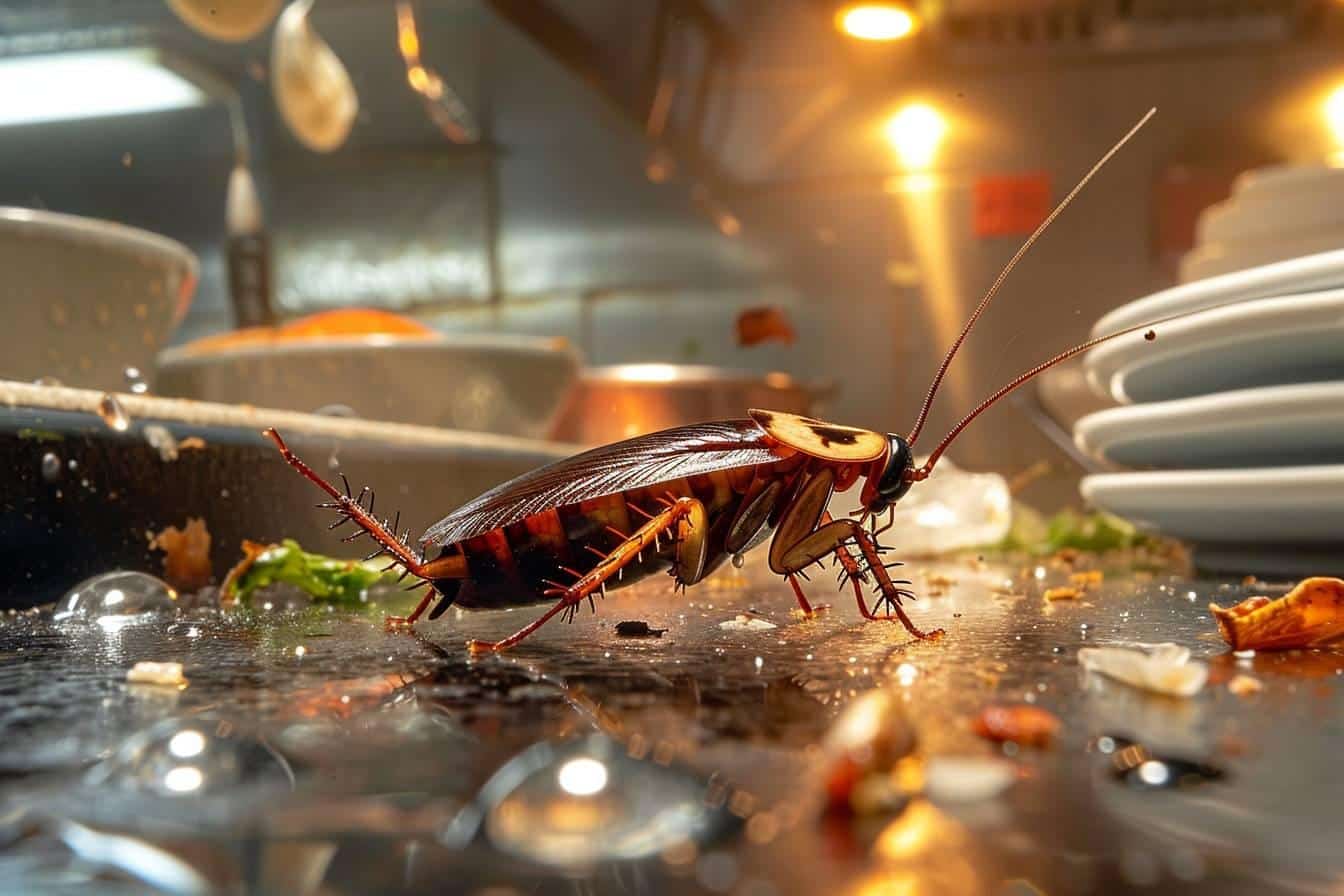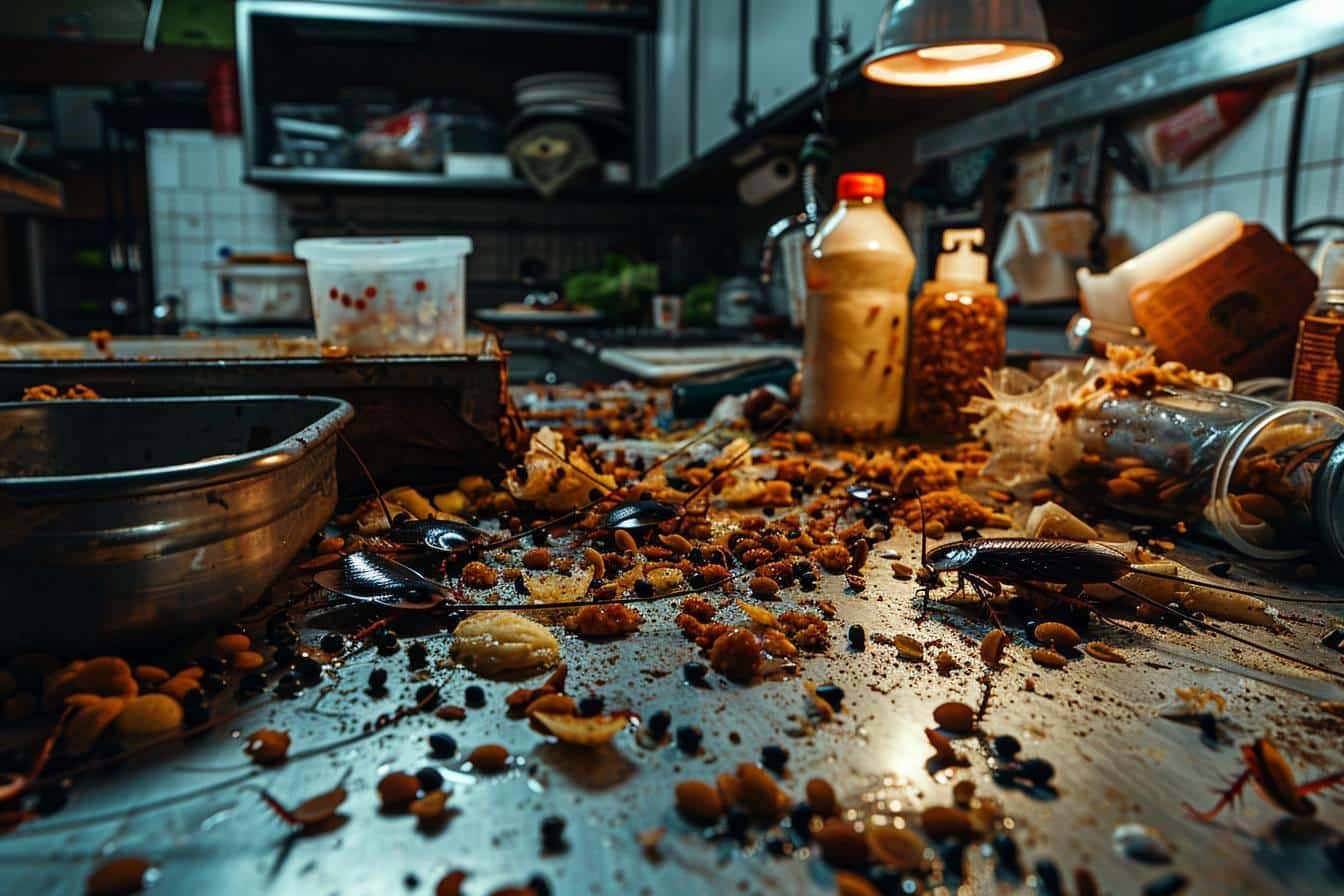Cockroach droppings are a telltale sign of an infestation that no homeowner wants to encounter. These small, dark pellets can be found in various areas of your home, indicating the presence of these resilient pests. Understanding how to identify, assess the health risks, and effectively remove cockroach excrement is crucial for maintaining a clean and safe living environment.
Identifying cockroach droppings
Recognizing cockroach droppings is the first step in addressing a potential infestation. These pests leave behind distinctive fecal matter that can help you determine the severity of the problem. Cockroach feces typically appear as small, dark pellets resembling ground coffee or black pepper.
The size and appearance of cockroach droppings can vary depending on the species and size of the insect. Generally, you can expect to find :
- Pellets measuring 1-2 mm in length
- Dark brown or black coloration
- Cylindrical shape with ridges or blunt ends
- Clustered deposits in hidden areas
Cockroach excrement is often found in areas where these pests frequent, such as :
- Kitchen cabinets and drawers
- Behind appliances
- Under sinks
- In bathroom corners
- Along baseboards and in cracks
It’s important to note that fresh droppings appear darker and more moist, while older deposits tend to be drier and may crumble easily. The presence of both fresh and old droppings can indicate an ongoing infestation that requires immediate attention.
To distinguish cockroach droppings from those of other pests, consider the following characteristics :
| Pest | Dropping Characteristics |
|---|---|
| Cockroach | Small, dark pellets with ridges |
| Mouse | Slightly larger, smooth pellets with pointed ends |
| Rat | Much larger, capsule-shaped droppings |
| Bed Bug | Tiny, dark spots that smear when wet |
Health risks associated with cockroach excrement
Cockroach droppings pose significant health risks to humans, making their prompt removal essential. These pests are known carriers of various pathogens and can contaminate surfaces and food with their feces. Exposure to cockroach excrement can lead to several health issues, particularly for individuals with allergies or respiratory conditions.
Some of the primary health concerns associated with cockroach droppings include :
- Allergic reactions : Proteins found in cockroach feces can trigger allergic responses in sensitive individuals. Symptoms may include sneezing, runny nose, itchy eyes, and skin rashes.
- Asthma exacerbation : The presence of cockroach allergens in the environment can worsen asthma symptoms, particularly in children. Prolonged exposure may lead to more frequent asthma attacks and decreased lung function.
- Gastrointestinal issues : Cockroaches can spread bacteria such as Salmonella and E. coli through their droppings, potentially causing food poisoning and other digestive problems if ingested.
- Respiratory infections : Inhaling particles from dried cockroach feces can irritate the respiratory tract and potentially lead to infections, especially in individuals with compromised immune systems.
The World Health Organization (WHO) recognizes cockroaches as potential mechanical vectors for disease-causing organisms. Their ability to move between unsanitary areas and food preparation surfaces makes them particularly concerning from a public health perspective.
To minimize health risks associated with cockroach excrement, it’s crucial to :
- Regularly clean and disinfect areas where droppings are found
- Properly store food in sealed containers
- Address moisture issues that may attract cockroaches
- Seek professional pest control services for severe infestations

Effective removal and prevention strategies
Removing cockroach droppings and preventing future infestations requires a multi-faceted approach. Proper cleaning techniques and preventive measures are essential for maintaining a cockroach-free environment. Here are some effective strategies to tackle this issue :
1. Safe cleaning procedures :
- Wear protective gear such as gloves and a face mask
- Use a HEPA filter vacuum to remove dry droppings
- Disinfect surfaces with a mixture of water and bleach (1 :10 ratio)
- Avoid sweeping dry droppings to prevent airborne particles
2. Eliminate entry points and hiding spots :
- Seal cracks and crevices in walls, floors, and ceilings
- Repair leaky pipes and faucets to reduce moisture
- Remove clutter that provides shelter for cockroaches
3. Implement proper food storage and waste management :
- Store food in airtight containers
- Clean up spills and crumbs promptly
- Use sealed trash bins and dispose of garbage regularly
4. Natural deterrents and baits :
Consider using natural repellents such as bay leaves, cucumber slices, or catnip in areas prone to cockroach activity. Additionally, boric acid-based baits can be effective when placed in strategic locations.
5. Professional pest control :
For severe infestations or persistent problems, consulting a professional pest control service is advisable. They can provide targeted treatments and ongoing prevention strategies tailored to your specific situation.
Remember that consistency is key when dealing with cockroach infestations. Regular cleaning, maintenance, and vigilance are necessary to keep these resilient pests at bay and ensure a healthy living environment free from the risks associated with cockroach excrement.

